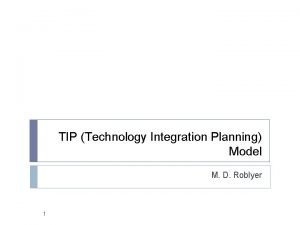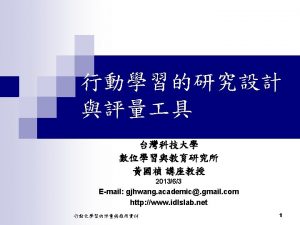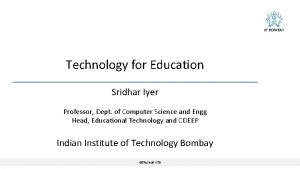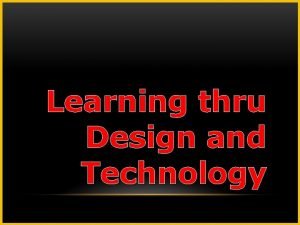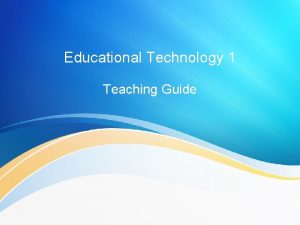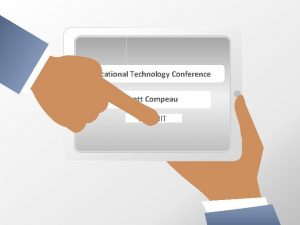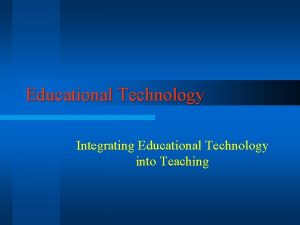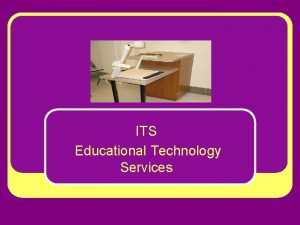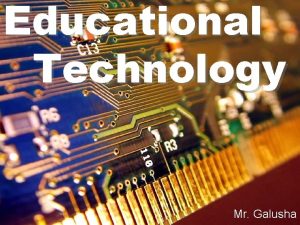Types of Educational Technology Types of Educational Technology







- Slides: 7

Types of Educational Technology

Types of Educational Technology There are two major types of educational technology. • Synchronous • Asynchronous

Synchronous Technology • In general, synchronous is an adjective describing objects or events that are coordinated in time. The word synchronous means working together at the same time. • In the online learning world, chat rooms and online conferences are good examples of synchronous communication. In a chat room, people's comments to each other are relayed immediately, enabling a real-time discourse. • Similarly, online conferencing with the benefit of voice over Internet protocol tools enable real-time conversations to take place online. Learning from synchronous communication is enhanced because real-time conversations allow people to explore, through writing or talking, the class concepts. The act of verbalizing helps students build bridges between different ideas and concepts, thus helping them retain information more effectively.

• Other examples of synchronous communication may include online real-time live teacher instruction and feedback, skype conversation and chat rooms or virtual classrooms where everyone is online and working collaboratively at the same time. Synchronous learning helps students create an open-mind because they have to listen and learn from their peers.

Asynchronous Technology • Asynchronous communication is the relay of information with a time lag. • Asynchronous communication is a self-paced and allows participants to engage in the exchange ideas or information without the dependency of other participants involvement at the same time. • Examples of Asynchronous technology may included E-mail, websupported books, hypertext documents, audio, video courses and social networking using web. • In asynchronous online courses, students proceed at their own pace.

• Discussion forums and email are two examples of how asynchronous communication is employed in online learning. It is very helpful to communicate in this way, because students have plenty of time to formulate thoughts. • By communicating via email, students are able to respond in detail to a question or topic that they might have answered incompletely in a real-time conversation. • This time lag in communication helps students internalize information by giving them time to research certain ideas or merely extra time for contemplation.

• The main disadvantage to asynchronous communication is time lost waiting for a response.
 Different phases of technology integration planning model
Different phases of technology integration planning model Educational technology & society
Educational technology & society Educational technology interoperability
Educational technology interoperability Educational technology iit bombay
Educational technology iit bombay Historical development of educational technology ppt
Historical development of educational technology ppt Educational technology is derived from a greek word
Educational technology is derived from a greek word Principles of educational technology
Principles of educational technology Systematized instruction chart
Systematized instruction chart
